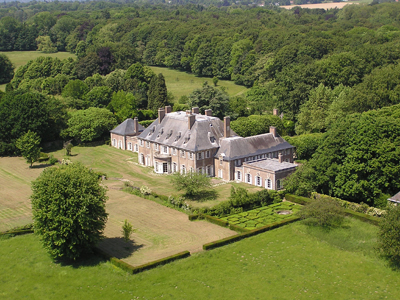Waterloo is the most famous commune in the Walloon Brabant and has 30,000 residents from 115 different countries in an area of 2,102 hectares. Waterloo or "damp meadow" owes its fame initially to the road pavers.
It is said that Moscow's Red Square was paved by the people of Waterloo! A sugar refinery, four soap factories and a couple breweries set up their quarters here.
Today, its luxury boutiques, pleasant shopping centre, as well as its many cultural and sporting activities and its infrastructure of hotels attract a large amount of visitors.
"Waterloo connection"
There is only one Waterloo which retains its links to the battle that changed Europe's destiny in 1815 ...
A symbol of victory over a formidable and feared opponent, to exceptional prestige; more than 124 locations around the world have adopted this name, introduced by the veterans of 1815.
Since 1996, the "Waterloo Connection" has brought together all these cities with the peaceful goal of developing trade and personal contacts.
Famous persons :
- "The Singing Nun", who doesnít remember "Dominique-nique - nique ...", the resounding chart-topper that earned her the No.1 in the U.S. in 1963 and sold more records than the Beatles and Elvis Presley combined?
The Singing Sister lived in the Fichermont convent, which is located a couple of hundred metres from the famous Lion Mound. - Morris, the creator of 'Lucky Lukeí, was part of the "Waterloo Group of Four" along with JijÈ (creator of "Spirou and Fantasio"), Wil (creator ofí "Isabelle" and Franquin (creator of 'Gaston Lagaffeí).
- Jules Bastin, an opera singer with an international career. The cultural hall of the town is dedicated to him.
SYNDICAT D'INITIATIVE DE WATERLOO
Chaussée de Bruxelles 218
1410 Waterloo
Tel. : +32 (0)2 352 09 10
Fax : +32.(0)2 354 22 23
Site : waterloo-tourisme.be
E-mail : info@waterloo-tourisme.be
WELCOME TO WATERLOO
Situated in the province of Brabant, 16 km south of Brussels, Waterloo covers an area of 2,097 hectares of which 99 hectares of woodland are part of the Soignes Forest.
At the gateway of Brussels, this commune harmoniously combines the economic life of its many residents and tourists...
Waterloo is twinned with Rambouillet (France), Nagakute (Japan) and Differdange (Luxembourg).
HISTORICALLY, THE VILLAGE OF STREET PAVERS...
In Waterloo, there is evidence of a human presence from the Mesolithic era, even Palaeolithic.
In 1128, the name of the town appears in texts as a place called WATERLOTS.
Waterloo was nevertheless far from being the town located at the entrance to the Soignes Forest. It is known and appreciated by travellers, soldiers and leaders, alike.
The Village was also regularly visited in 1600 by the Infanta Isabella - Governor of the Provinces which even gave her name to an avenue ...
It was during the 16th and 17th centuries that Waterloo underwent an important development, due to its location on the road linking Brussels and Genappe, as well as coal regions.
Apart from a few farms and inns, the town is occupied by foresters, attracted by its proximity to Brussels and a road which assisted in the transportation of their charcoal. Waterloo was the stop off point for travellers, pleased to be uninjured after the dark and mysterious Soignes Forest which was favoured amongst highwaymen.
In 1687, the Marquis de Gastanaga, Governor of the Netherlands, built the Royal Chapel in Waterloo in the vain hope of seeing his King, Charles II, give birth to a male heir.
Finally, it was during this period that Waterloo was under the thumb of Jacques Pastur, also known as "Jaco", a mercenary who was in the pay of either France or Spain and who had the privilege of fighting the British troops of the Duke of Marlborough in 1705. The first signs of 18th June 1815 and its famous battle.
For years, the economic nature of the town was primarily agricultural. At the start of the 19th century, there was an interesting development within the town which saw the construction of a windmill, two breweries and a distillery. A little later, there was even a sugar refinery, a chemical plant, five soap factories and numerous paving companies that were to give Waterloo its reputation.
Those last decades, Waterloo - with its dynamic municipality of 30,000 inhabitants - was experiencing a significant economic growth as the home of many renowned European businesses, while preserving the habitat and quality of life of its citizens.
CIVIL HERITAGE
The Argenteuil estate
(listed - not open to the public)
On the south side of the Soignes Forest, the Count of Meeus, who was also Governor of the Société Générale de Belgique (now Fortis Bank/BNP), acquired this splendid property with its numerous architectural achievements in 1831.
The Tuck Chateau
(not open to the public)
Named after the American businessman who built it between the wars was the residence of King Leopold III and his family between 1960 and 2002.
Since September 2004, the castle and its park covering 136 acres have been owned privately by an expert in ethology.
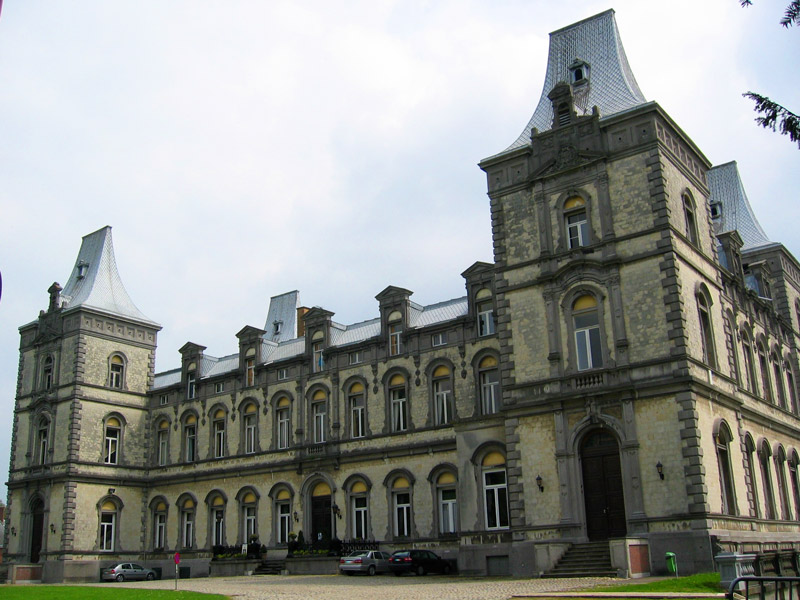
The Argenteuil (formerly Meeus)
(not open to the public)
Destroyed by fire in 1847, the current castle with its four square towers is evidence of the talent of the celebrated architect of the period, Cluysenaar. Since 1993, the castle and its park covering 14 hectares are home to the Scandinavian School.
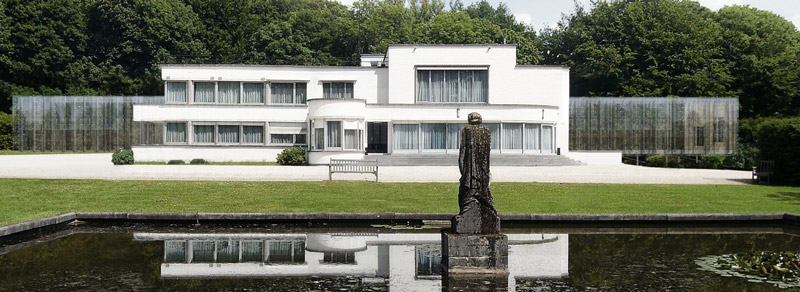
The Music Chapel of Queen Elisabeth (1939)
(not open to the public)
Testimony of the modernist architecture in Walloon Brabant, located in a beautiful green setting.
Apart from the Music Competition, the association launched an international music training program under the tutelage of renowned professors such as José van Dam, Abel Rahman El Bacha ...
LOCAL MUSEUM
Waterloo Museum
Waterloo, from Victor Hugo to ABBA: a universally known name! On the first floor of the Tourist Office, discover this museum where you will relive the story of this small hamlet on the outskirts of Brussels. Through Palaeolithic items, the first documents formalizing Waterloo in 1128, the Museum will take you through the centuries of history richer than the famous battlefield.
This location would later become a cosmopolitan city known throughout the world.
Open:
Every day (except on the 1st of January and the 25th of December)
From June to September between 09:30 and 18:00
From October to May between 10:00 and 17:00
Waterloo Tourism Office (1st floor)
Chaussée de Bruxelles 218
1410 Waterloo
Tél.: +32 (0)2 352 09 10
THE WATERLOO STATUES
The Shaft of Corn
A civic monument in honour of the Waterloo sculptor Denis. This grieving grain of life contains the soil of the Yser, the Lys, the Sallanelles and the ashes of Dachau.
The Paver
This sculpture by Pitot who comes from Waterloo pays tribute to this time-honoured trade, the finest in Waterloo in the 19th century.
FOLKLORE
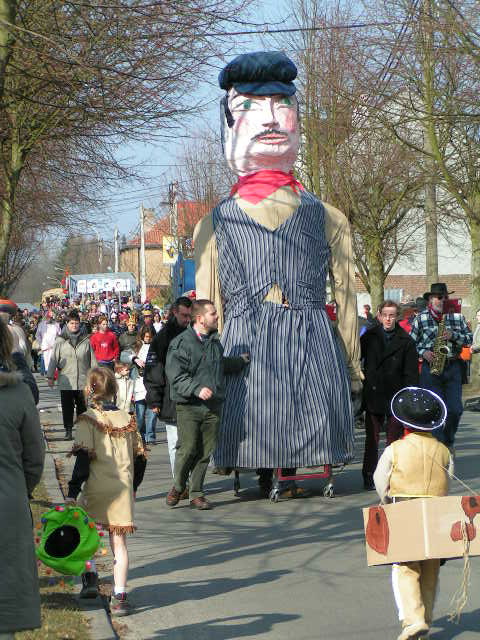
The Giant "Jules the Paver"
RELIGIOUS HERITAGE
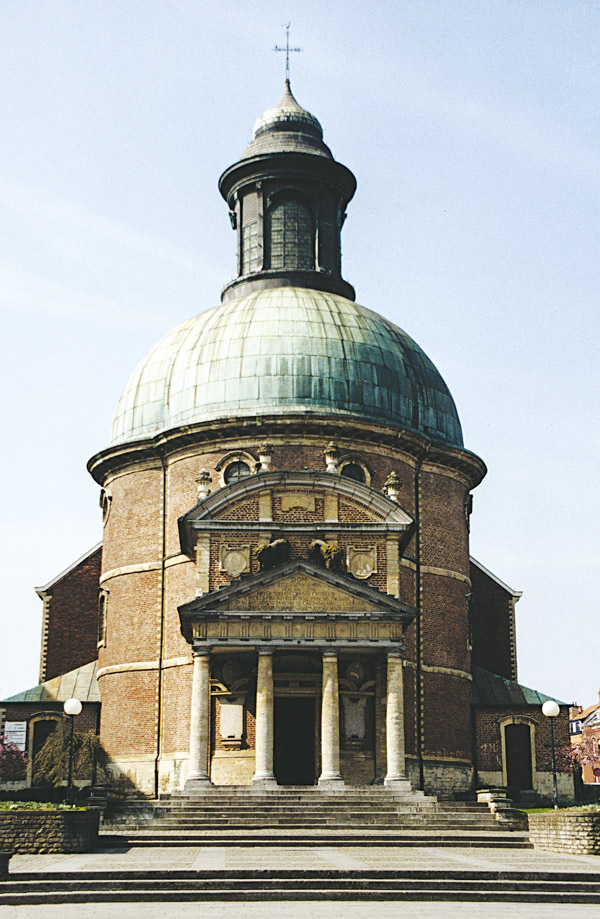
Royal Chapel - Church of Saint-Joseph (listed)
Opposite the famous Wellington Museum, located next to the Tourist Office, you'll find St. Joseph's Church which was originally a chapel.
It was completed in 1689 and consecrated in 1690 by the vicar-general of the archdiocese, in the presence of the Governor General, Marquis Gastanaga (at that time, Belgium belonged to Spain).
The marquis had built it in the hope - which didn't occur - that King Charles II had an heir.
His intention was engraved into the pediment of the porch between the two stone lions for all to read.
The dome was restored in 1844 and is crowned by a cupola with four entasi depicting the shape of four leaves and then highlighted by six oculi and a cylindrical lantern with eight windows. This imposing dome is the last Belgian monument of the Spanish era.
In the aftermath of the battle in 1815, it became a British memorial.
The memorial plaques, affixed to the walls of the back of the church, conjure up vivid chapters of military action.
Well worth seeing: bas-reliefs dedicated to the soldiers and a bust of Wellington, done by Adams.
A new building was inaugurated in 1824. In the same year, construction of the presbytery started (on the right side of the church, now the location of the Waterloo Tourist Office ).
In 1855, the third church was constructed by the architect Emile Coulon.
Note: the remarkable Baroque style, probably the work of Van Hoof from Antwerp, originates from the Cistercian abbey in Aywiers, as do the communion benches.
Also take note of the stalls, the High Altar as well as the exceptional stained glass windows.
Visits by appointment: contact the Tourist Office
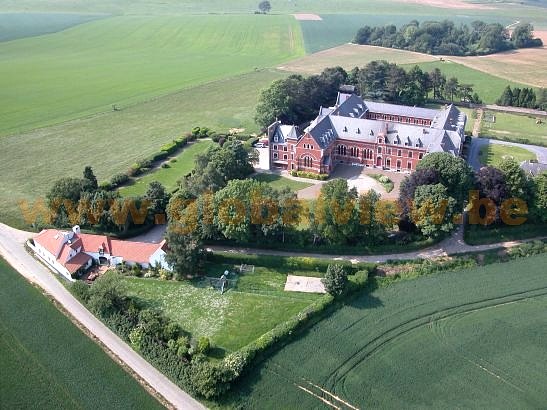
Fichermont Convent
It was here that Sister Gabrielle become The Singing Nun. Her songs gained worldwide success and she had an American nr. 1 hit in 1963. The Dominican convent found it hard to regain the necessary quiet after this media frenzy.
These days, it hosts a Catholic community: "le Verbe de Vie" (www.leverbedevie.net).
Church of Saint-François d'Assise
Built of white Plancenoit stone, it has beautiful modern stained glass by Joors d'Anvers.
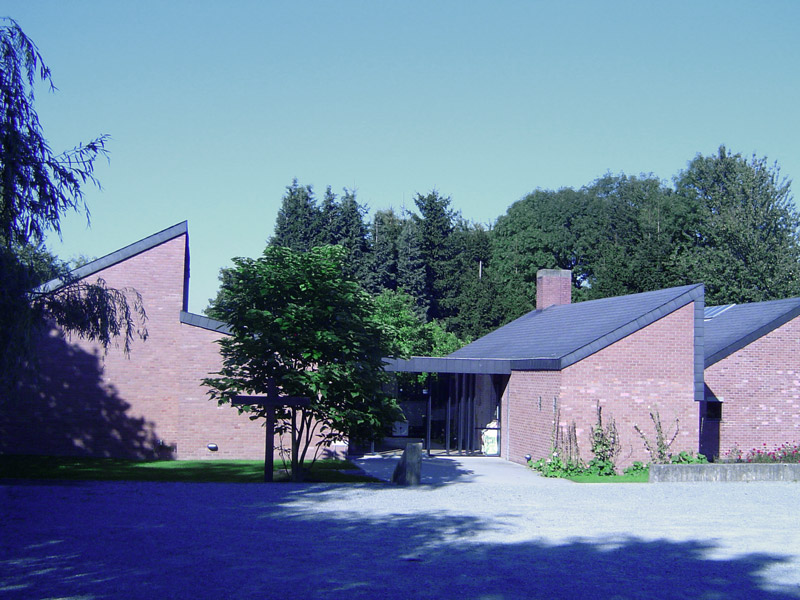
Church of Saint-Paul
Building designed by the Waterloo architect Jean Husk in 1968.

